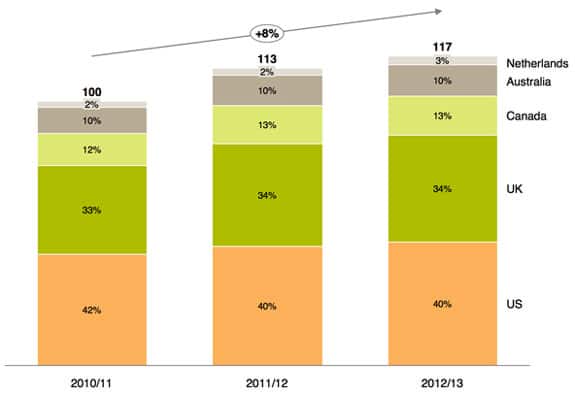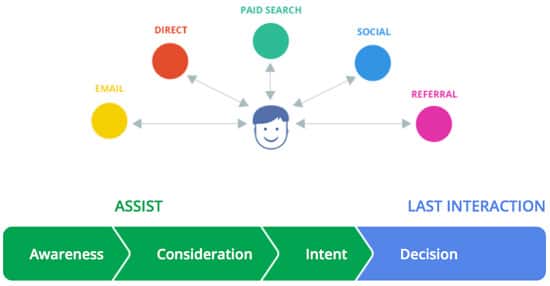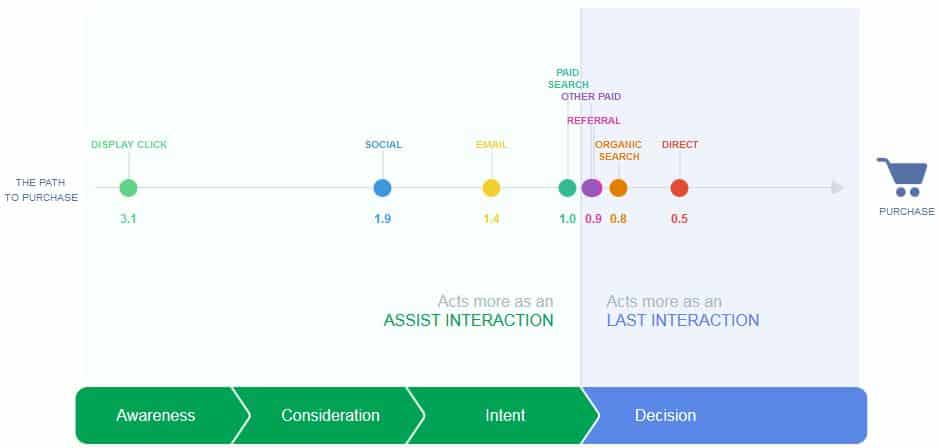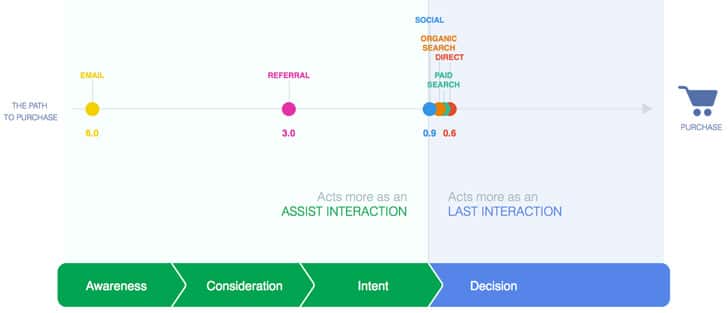Search trends playing an increasing role in international education marketing
Google continues to produce fascinating research on education-related search, and the growing body of data and analysis in the area is yielding important insights for education marketers. The first thing to note is that education-related search volumes have continued to increase year on year.
“The student decision journey has moved online,” Google said in 2013. “One in ten prospective students now search exclusively online for classes and programmes.”
As the following table illustrates, overall search volumes for the top five ranked institutions in major destinations alone have increased by 8% between 2010/11 and 2012/13.

Non-branded search still key
Brand-related search queries – that is, searches for specific institutions or schools – were down marginally (-1%) in the second quarter of this year when compared to the same quarter in 2013. Non-branded queries, meanwhile, were up slightly (+1%) over the same period. These findings extend an important observation we first noted in 2012: that 9 in 10 prospective students don’t know which school they want to attend at the onset of the search process and they reflect this non-brand orientation in their search behaviour. Google categorises non-branded education search as follows:
- Programme searches - pertain to specific fields of study;
- Degree queries - factor in specific credentials (e.g., Bachelor, Master's);
- General queries - reflect very broadly structured search requests.
Programme searches were up by 4% for Q2 2014 (compared to the same quarter in 2013), while degree searches increased by 6% and general query volumes were flat relative to 2013. Google argues that the continued importance of non-branded education search – and the modest decline in brand-based queries – means that educators need new strategies to drive interest and awareness around their brand terms.
In one illustration of a possible strategy in support of this goal, an internal study at Google found that advertisers who ran video ads on YouTube later saw a 12% lift in search volumes for their brand.
Interestingly, internal tracking at Google also indicates that “geo terms” – search keywords that include a geographic modifier (e.g., “bachelor degrees in computing science in London”) – performed strongly with respect to click-through conversions.
Be specific
This picks up one of the key takeaways from this quarter’s Education Search Analysis report: the importance of specificity in search marketing for education. Whether with respect to search engine optimisation (SEO) strategies or in terms of paid search advertising, Google strongly recommends that education marketers target their efforts to promoting particular programmes in specific locations. Google reports that education search queries are becoming longer and more detailed, and so reflect a more specific indication of the prospective student’s interests. The data suggests that search marketing efforts that anticipate, track, and respond to that user behaviour will generate better results. “Being more specific about what you offer and capturing them earlier in the cycle is really important,” notes one Google analyst. We will revisit this topic shortly with an additional article that looks at tools and techniques for identifying important keywords and queries for use in education search marketing.
Mobile momentum
For the moment, another key finding in the current Education Search Analysis is that mobile continues to play a larger role. The dramatic growth in mobile usage is now having a greater impact in terms of shaping user behaviour and related marketing strategies. Mobile education queries were up 23% in Q2 2014 (when compared to the same quarter last year), and Google reports that prospective students are using mobile devices earlier than ever. Mobile is “moving prospective student behaviour ‘up funnel’ as they [more often] begin their search process on a mobile device,” says Google, and so it is more important than ever to deliver a high-quality mobile browsing experience for prospects.
Internal Google research shows that half of all visitors to education mobile sites report having had a poor experience. As a result, 40% of prospects report a negative perception of the brand, and 35% said they moved on to a competitor website.
Education marketers can counter this by ensuring that programme information is easily found on mobile sites and that calls to action are appropriately timed and effective.
Another recent Google analysis, for example, found that shorter lead generation forms convert better: forms of three pages or less had a 20% better chance of converting a prospective student than was the case for longer forms.
“Having a cross-device strategy is critical,” says Jennifer Howard, Director of Education at Google. “Half of all prospective students use mobile devices to research higher education institutions, according to a study Google did with Nielsen this year. And Google’s internal data also indicates that by 2014, 40% of education search queries will happen on mobile devices.” Ross Woodard, Chief Marketing Officer for Iowa’s Ashford University concurs: “When Ashford University looked at students’ new decision journey, the school found prospective students often visited its website on smartphones early on and then returned later on desktop for more information. So the university simplified its mobile website to focus on three features: embedded video, programmes offered, and a short contact form. It’s about optimising the experience as it relates to smartphones and tablets… We made it very simple - the videos talk about an emotional experience as it relates to the school, and the short form allows them to conveniently enter an inquiry.”
Many channels lead to a purchase decision
The Ashford example illustrates another truism of search marketing for education: the path to choosing a programme and an institution or school is often a long one, and a process that unfolds over an extended period of time.
“77% of education seekers will first visit a school’s website at least two weeks - and often two months - before taking action,” says Ms Howard. “Education is a highly-involved decision and one that requires many different touch points along the way. Asking prospects to fill out a lead form too soon might result in short-term success for a marketer, but in the end, both the student and the school will lose. The key is to engage potential students in the right mindsets, on the right channels, and to enable them to experience all the great things your school has to offer.”
Google – more to the point, its virtual oceans of search and user data – has a lot to say about this multi-step process as well. Part of the search giant’s data analysis aims to weigh how much influence the different channels – organic search, social media, email, and others – have on buying decisions in different markets and across different industries.

- “Assisting” channels are those that help to build awareness and intent at the earlier stages in the customer decision-making process;
- “Last interaction” channels are the pivotal last points of contact prior to a purchase.
Needless to say, given the many millions of rows of data it has access to, Google has an interesting perspective on the broad questions of channel effectiveness and fit. It has exposed some of its analysis online and the findings are easily sorted via interactive tools by industry and for different countries.
These tools allow users to see with a couple of clicks whether a given channel plays more of an “assisting” or “last interaction” role – that is, to understand better the role that each channel plays in the decision-making and buying process. Even with the (for the moment at least) limited number of countries available, there are some interesting observations to be had.
For example, as the following screen captures reflect, there are relatively few “last interaction” channels at play in education marketing in the US. In Brazil, on the other hand, more channels can play the role of the final step in the customer journey to purchase. Social media, for example, falls into the "assisted" category in the US but acts more as a "last interaction" in Brazil.


















